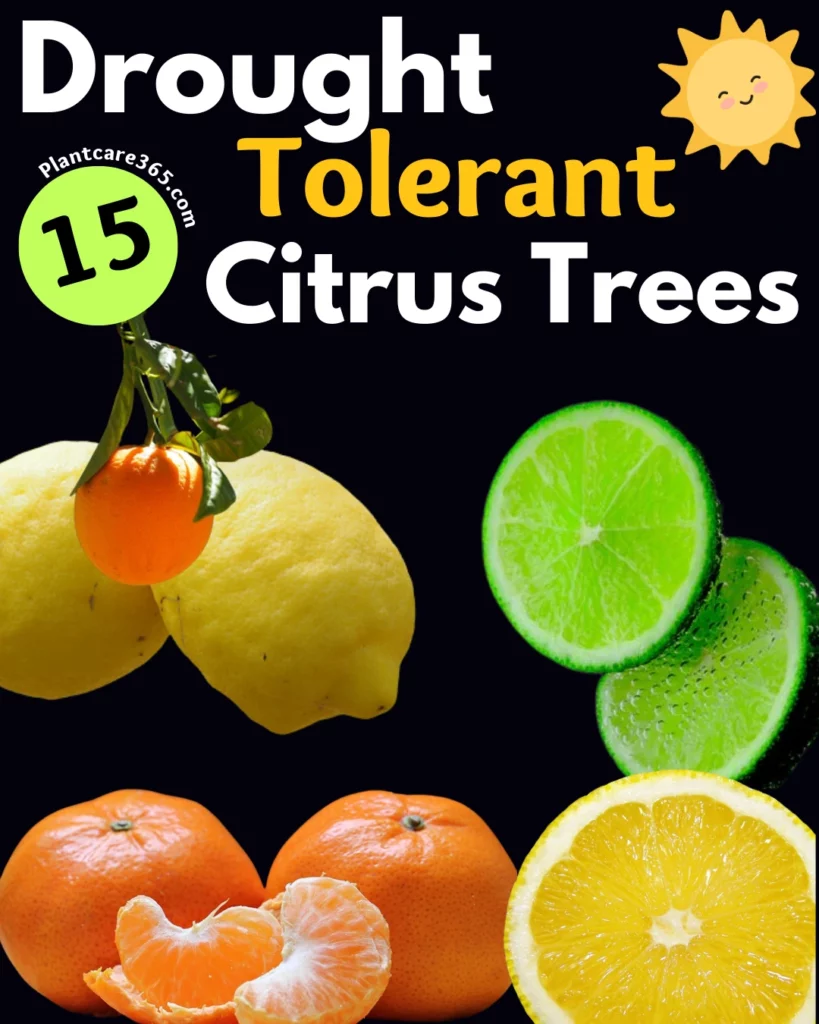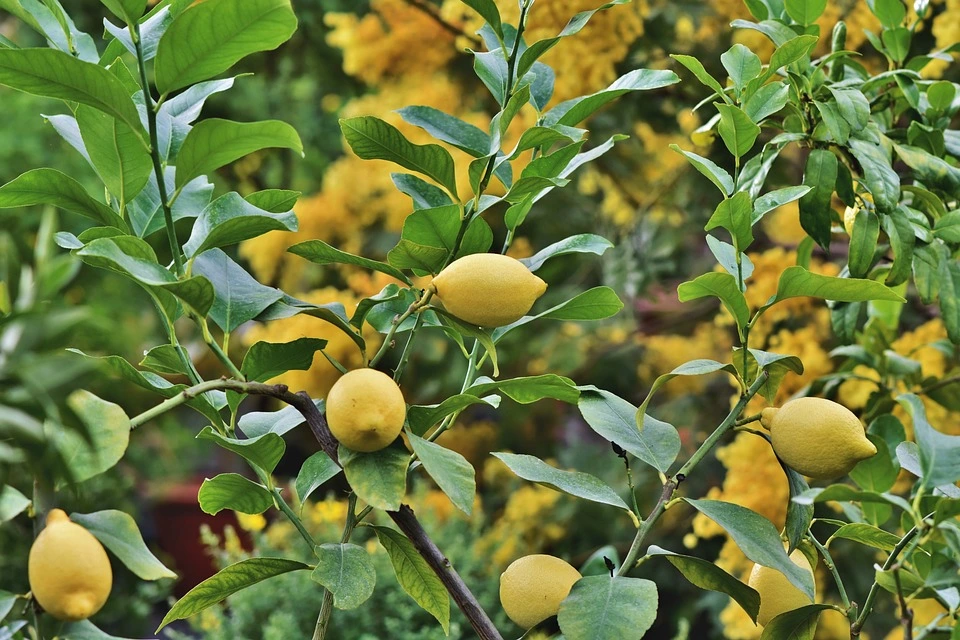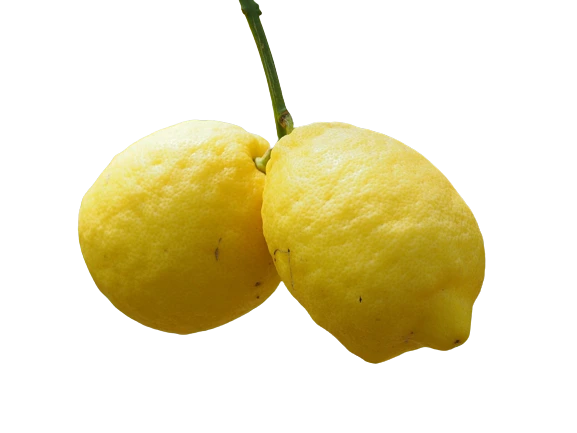You find will find a list of the best drought-tolerant citrus trees and types of trees under each category. How to care for them and the best time to harvest and prune each tree.
Why Choose Heat-Tolerant Citrus Trees
Water conservation: Growing drought-tolerant citrus trees in home gardens can help conserve water, especially in areas with limited water resources.
These trees are adapted to dry weather conditions and can survive with minimal water, making them a great option for gardeners looking to save water.
Fruit production: Drought-tolerant citrus trees are an excellent choice for home gardeners who want to grow their own fresh, nutritious fruit.
Citrus fruits are high in vitamin C, fiber, and antioxidants, making them a healthy addition to any diet. By growing drought-tolerant citrus trees, home gardeners can enjoy delicious, healthy fruit while conserving water.
Low maintenance: Drought-tolerant citrus trees require less water and maintenance compared to other fruit trees. This means that home gardeners can spend less time and effort caring for their trees while still enjoying a bountiful harvest of fresh fruit.
Sustainability: By growing drought-tolerant citrus trees, home gardeners can contribute to sustainable agriculture and reduce their environmental impact. These trees require less water and fewer resources, making them a more sustainable choice for home gardens.
Related: Drought-Tolerant Fruit Trees
Drought Tolerant Citrus Trees: Lemons, Oranges & Limes
Lemon Trees
Lemon trees are a popular fruit tree in many parts of the world, known for their tart, juicy fruit and fragrant flowers. In addition to their delicious flavor, lemon trees are also well-known for their ability to tolerate drought conditions.
In this article, we will explore the adaptations of lemon trees that make them drought-tolerant, the benefits of growing these trees, and tips for successfully growing them in your own garden.
They have several adaptations that allow them to tolerate dry conditions, including a deep root system and thick, waxy leaves that reduce water loss. Here are some quick care tips for growing lemon trees:
Quick Care Tips on Growing Lemon Tree
Watering: Lemon trees require deep, infrequent watering to encourage deep root growth. Water deeply once or twice a week, depending on the climate and soil conditions.
Fertilizing: Use a balanced fertilizer to provide your lemon trees with the nutrients they need to produce healthy fruit. Apply fertilizer in early spring and again in early fall.
Pruning: Prune your lemon trees in late winter or early spring to remove dead or diseased wood and to shape the tree for optimal fruit production.
Pest Control: Monitor your lemon trees for pests such as scale insects, aphids, and spider mites. Treat infestations promptly to prevent damage to the tree and fruit.
Fruiting Season
Lemon trees typically begin fruiting in 3-5 years, depending on growing conditions and variety. The fruiting season for lemon trees can vary depending on the climate and location, but generally begins in late winter or early spring and lasts through summer.
How long to Start Fruits
In terms of how long it takes for the fruit to mature, this can also vary depending on the variety and growing conditions.
Generally, lemons take around 6-9 months to mature after flowering. It’s important to let the fruit fully ripen on the tree before harvesting for the best flavor and quality. With proper care and maintenance, they can produce healthy, delicious fruit year after year.
Recap
- First, choose a location with well-draining soil and full sun exposure.
- Lemon trees do not tolerate standing water or shade, so it is important to choose a site that gets plenty of sunlight and has good drainage.
- Second, water your lemon trees deeply and infrequently, rather than frequently and shallowly. This will encourage deep root growth and help your trees become more drought-resistant over time.
- Finally, fertilize your lemon trees with a balanced fertilizer to ensure they have the nutrients they need to produce healthy fruit.
Related Quick Links
- Best climbing plants that bear fruits
- Decorative Fruit Bearing Climbing Plant
- Growing Raspberries on Walls
Some Best Drought Tolerant Lemon Trees
Here are some of the best types of drought-tolerant lemon trees:
- Eureka Lemon: This is a popular variety of lemon trees that is known for its high fruit production and adaptability to different soil types. It has a thick, juicy rind and a tart, acidic flavor.
- Lisbon Lemon: Another popular variety of lemon trees, Lisbon is known for its excellent fruit quality and resistance to pests and diseases. It has a thin, smooth rind and a juicy, acidic pulp.
- Meyer Lemon: This is a hybrid lemon tree that is a cross between a lemon and an orange. It is known for its sweeter, less acidic flavor and its smaller, rounder fruit. Meyer lemon trees are also more cold-tolerant than other lemon varieties.
- Ponderosa Lemon: This is a large, rough-skinned lemon variety that is known for its ornamental value as well as its fruit. Ponderosa lemons are often used for making lemon marmalade or candied peel.
- Variegated Pink Lemon: This is a unique and visually stunning lemon tree that produces pink-fleshed fruit with variegated green and white leaves. It is less common than other lemon varieties but is a great choice for gardeners looking for something a little different.
Drought Tolerant Lime Trees
- Adaptability to different soil types: Lime trees are able to grow in a variety of soil types, including sandy, loamy, and clay soils, making them a great choice for gardeners in areas with unpredictable or poor-quality soil.
- Deep root systems: Lime trees have deep root systems that help them access to water and nutrients deep within the soil, making them less dependent on frequent watering.
- Tolerance to heat: Lime trees are able to tolerate high temperatures and direct sunlight, making them well-suited to hot and dry climates.
Quick Care Tips On Lime Trees
- Planting in well-draining soil: Lime trees need well-draining soil to prevent root rot and other moisture-related problems.
- Watering deeply and infrequently: Lime trees should be watered deeply and infrequently, allowing the soil to dry out slightly between waterings.
- Fertilizing regularly: Lime trees require regular fertilization to ensure healthy growth and fruit production. Use a balanced fertilizer formulated specifically for citrus trees.
- Pruning regularly: Pruning helps to maintain the shape and size of the tree, as well as encourage healthy growth and fruit production.
Fruiting Season & How Long to Mature
Lime trees typically fruit in the summer, with some varieties producing fruit year-round. The time it takes for a lime tree to start producing fruit depends on several factors, including the age of the tree and growing conditions. In general, it can take 2-5 years for a lime tree to start producing fruit.
Harvesting Different Types of Limes
- Mexican limes (also known as Key limes) You can harvest when they are fully ripe and have turned yellow. Use these limes for juicing and they give you a slightly sweeter and more complex flavor when fully ripe.
- Persian limes (the most common variety found in grocery stores) are typically harvested when they are green and fully mature. They have a more acidic flavor and are commonly used in cooking and for cocktails.
- Bearss limes are a larger variety of Persian limes and are typically harvested when they are green and fully mature. They have a slightly sweeter flavor than Persian limes and are often used for juicing and cooking.
To harvest limes, gently twist the fruit off the tree or use pruning shears to cut the stem. Avoid pulling the fruit off the tree, as this can damage the branch and make it more susceptible to disease.
Once harvested, limes can be stored at room temperature for up to a week or in the refrigerator for up to a month.
Oranges
Types of Oranges for Your Drought-Tolerant Garden
- Valencia oranges – these are the most common type of oranges grown in California and are known for their high juice content and sweet flavor. They are typically harvested from March to July.
- Navel oranges – these are a popular type of sweet orange with a distinctive “belly button” on the blossom end of the fruit. They are typically harvested from November to April.
- Blood oranges – these oranges have a distinctive red or deep purple flesh and a sweet, tart flavor. They are typically harvested from December to May.
- Cara Cara oranges – these are a type of navel orange with pinkish-red flesh and a sweet flavor. They are typically harvested from December to April.
- Hamlin oranges – these are a popular variety of sweet oranges grown in Florida and are known for their high juice content and early ripening. They are typically harvested from October to December.
Why Choose Oranges
Oranges are drought-tolerant due to their ability to store water in their roots and leaves. Here are some quick care tips for growing drought-tolerant oranges:
Quick Care Tips
Plant in well-drained soil: Oranges prefer soil that is well-drained, as this will prevent water from pooling around the roots.
Water deeply and infrequently: Water deeply once a week during the growing season, and less frequently during the dormant season.
Mulch: Apply a layer of organic mulch around the base of the tree to help retain soil moisture.
Prune: Prune the tree regularly to remove dead or diseased wood and to promote new growth.
Fruit Season
Orange trees typically fruit during the winter months, but the exact fruiting season will depend on the variety and location. It can take anywhere from 2 to 5 years for an orange tree to start producing fruit, depending on the size and age of the tree when it was planted.
Harvesting Oranges
The best time to harvest oranges will also depend on the variety. For example, Valencia oranges are usually harvested in the spring and summer, while navel oranges are typically harvested in the winter months.
To determine if an orange is ready for harvest, give it a gentle squeeze – if it feels heavy and has a slightly soft skin, it’s likely ready to be picked.
Everything About These Drought-Tolerant Citrus Trees
- Are Valencia oranges the only drought-tolerant variety of oranges? No, while Valencia oranges are the most common drought-tolerant variety, other types such as Navel oranges, Blood oranges, Cara Cara oranges, and Hamlin oranges are also drought-tolerant.
- Can I grow lime trees in a drought-prone area? Yes, lime trees are generally drought-tolerant and you can grow them in areas with low water availability. However, they may still require occasional watering during periods of extreme drought.
- What is the difference between Key limes and Persian limes? Key limes are smaller and have a stronger, more acidic flavor compared to Persian limes. Key limes are typically harvested when they turn yellow, while Persian limes are harvested when they are green and fully mature.
- Can I grow lemon trees in a hot and dry climate? Yes, lemon trees are generally drought-tolerant and you choose them to grow in hot and dry climates. However, they still require regular watering and protection from extreme heat to thrive.
- How long does it take for orange trees to start producing fruit? It can take anywhere from 2 to 5 years for an orange tree to start producing fruit, depending on the size and age of the tree when it was planted.
- When is the best time to harvest oranges? The best time to harvest oranges will depend on the variety. Valencia oranges are typically harvested in the spring and summer, while you can harvest Navel oranges in the winter months. Blood oranges and Cara Cara oranges are typically harvested from December to May. And you can harvest the Hamlin oranges from October to December. To determine if an orange is ready for harvest, give it a gentle squeeze – if it feels heavy and has a slightly soft skin, it’s likely ready to be picked.
FAQ on Citrus Trees Heat Tolerance
- Are all citrus fruit trees drought-tolerant? No, not all citrus fruit trees are drought-tolerant. However, many varieties such as lemon trees, lime trees, and certain types of orange trees have been shown to be relatively drought-tolerant.
- Can I still grow citrus fruit trees in areas with low water availability? Yes, you can still grow citrus fruit trees in areas with low water availability. To do so successfully, it’s important to choose drought-tolerant varieties, provide adequate irrigation during dry periods, and plant the trees in well-draining soil.
- How often should I water my drought-tolerant citrus fruit trees? Even though these trees are drought-tolerant, they still require regular watering to produce healthy fruit. During the growing season, citrus fruit trees should be watered deeply once a week, or more frequently if the weather is particularly hot and dry.
- When is the best time to fertilize my drought-tolerant citrus fruit trees? The best time to fertilize citrus fruit trees is in the late winter or early spring before the new growth appears. Use a fertilizer specifically formulated for citrus trees and follow the package instructions for the best results.




